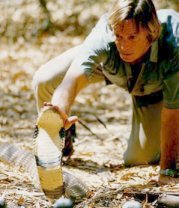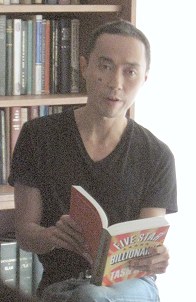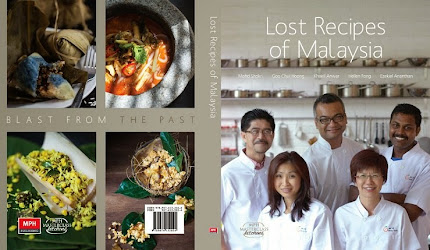Opinions of the place seem divided; some liked it, others didn't. I wasn't too enthusiastic about the pie place initially. Then the pulled lamb happened. Give. It. A. Go. I'd return for the meat pies, and I think they have a limited-edition special at the moment.
Sorry about the odd photo dimensions; they were taken with a Samsung Grand smartphone.
Pie thing, you make my gut sing...
first published in The Malay Mail Online, 09 July 2014
Reading about pies in a Terry Pratchett novel (which isn't about pies) made me want to try something similar, but I was hard-pressed to think of a suitable pie place.
However, after a long caffeine-soaked afternoon with Melody's friends, that choice was made for me. "Let's give A Pie Thing a whirl," one of them suggested. "Maybe in a couple of weeks?"

Interior of A Pie Thing, Damansara Uptown
Since then, I've heard a thing or two about this pie place, all of which from makan kaki Melody. Seems pies are the hottest new thing in town and Klang Valley-dwellers have begun to take note.
So one Sunday evening, off we went to A Pie Thing at Damansara Uptown for dinner. Currently, this new kid on the block (only launched this May) only opens from four in the afternoon and closes at 11pm — or until all pies are sold out, says the chalkboard outside.
Savoury pies appear to be the focus, with several dessert pies like lemon curd, peanut butter and chocolate, and a flavour called "The Elvis" (peanut butter, chocolate and banana) to round up their offerings.
Among the savoury offerings are chicken and mushroom, "pulled lamb", chilli and cheese, and creamy spinach, tucked into coffee cup-sized casings of shortcrust pastry.
Aside from the rich brown gravy, patrons have the option of capping their pies with either mashed potatoes or mashed peas — or a combination of both, called "The Mashacre", which can also be paired with a soda or hot beverage to form a combo.
Beverages? Choose from a list of coffees, teas, and something called the Leonidas Dark Choc Latte, which sang to Melody: "Take me off the shelf, I'll show you a good time."



Left: Choose to crown your pies with mashed peas (foreground) or
good old mashed potatoes; Centre: Oh, succulent, saliva-pumping
savoury goodness; Right: Surprisingly, the Peanut Butter Brownie
was nice and not as filling as the savoury meat pies
good old mashed potatoes; Centre: Oh, succulent, saliva-pumping
savoury goodness; Right: Surprisingly, the Peanut Butter Brownie
was nice and not as filling as the savoury meat pies
Neither of us wanted to be "mashacred" this evening, and Melody's two friends haven't shown up yet. So we picked a pie each, with gravy and one topping. "Let's try these and see if we can recommend these to them later," she said.
I know you're famished, Mel. You told me so — twice — on the way here. No need to cover it up.
Melody's creamy spinach was subtly flavoured, so it needed the gravy — not just because the crust can be dry. The champions are undoubtedly the meat pies. The pulled lamb, for one, was sublime. Even the pastry itself was good, after it soaked up a good amount of gravy.
♪ ...pie thing, I ... think you move me... ♫
By the time the other half of the pie party arrived and started ordering, we were almost done. So I decided on a chilli and cheese, which also had minced beef that was gamier compared to the lamb, said Melody. The flavour suited me fine, though they could have cut down on the salt.
The Dark Choc Latte was another odd thing. It came in two parts: a bottle of heated milk and a dark chocolate "lollipop." You unwrap the "lollipop", swirl it into the milk while it's still hot until almost nothing's left on the stick, and savour.
The flavour's pretty good, but the novelty of it doesn't last. If you're still not satisfied, a whole counter of other Leonidas products is available.
For me, it's the meat pies, hands down. Though they could re-think the use of the paper lining, which, despite being able to drink as much gravy as the pie crust, is hardly as appetising.
A Pie Thing
128G, Jalan SS21/35Damansara Utama
47400 Petaling Jaya
Selangor
Pork-free
CLOSED FOR GOOD; MOVING ELSEWHERE?
Twitter | Facebook page | BFM89.9 Interview
Categories:
Eating Out,
The Malay Mail Online













































